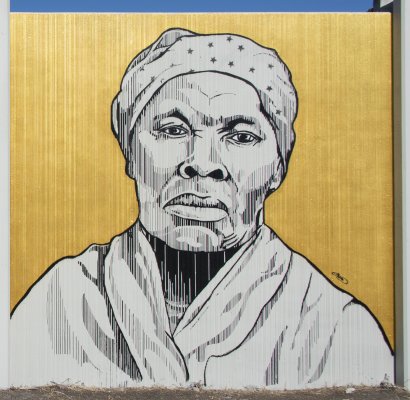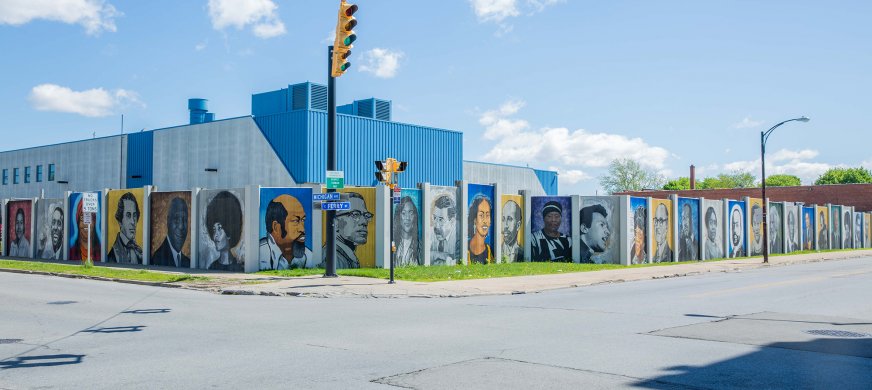Harriet Tubman

Edreys Wajed’s portrait of Harriet Tubman for The Freedom Wall, 2017. Photograph by Tom Loonan.
After escaping from slavery in 1849, Harriet Tubman went on to become one of the Underground Railroad’s most daring and successful operatives in the years preceding the Civil War and then a scout, spy, and nurse for the Union army during the conflict. Between 1850 and 1858, it is estimated that she made as many as nineteen trips back into slave-holding states in order to lead as many as three hundred people, including her own parents, north to Pennsylvania, New York, and Canada, where she herself was based. Tubman quickly became notorious among slaveholders and at one point a $40,000 reward was unsuccessfully offered for her capture.
When the Civil War began, Tubman volunteered for the Union army, eventually joining up with forces stationed in South Carolina. Her skills in disguise and infiltration developed during her work as a conductor on the Underground Railroad made Tubman a uniquely skilled spy, and she often crossed into Confederate territory to gather information. In 1863, she became the first American woman to organize and lead an armed expedition: a raid on the Combahee River in South Carolina that freed an estimated 700 slaves. After the war, Tubman dedicated herself to caring for poor and elderly African Americans, initially out of her home and farm in Auburn, New York, and eventually in the purpose-built Harriet Tubman Home for the Aged. She also became involved in the women’s right movement and in 1896 cofounded the National Association of Colored Women.

